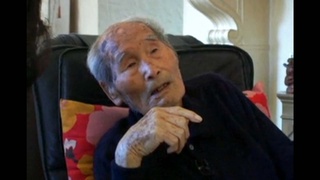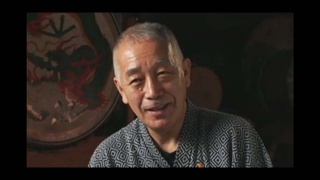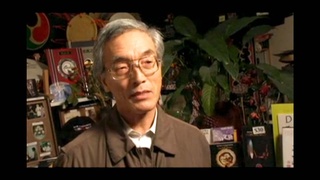Interviews
First taiko performance in the United States (Japanese)
(Japanese) I found there was a Bon Dance at the Long Beach Buddhist Temple in the “Rafu Shimpo”. I quickly went down there. There was yagura (wooden platform) and taiko with a Nisei or Sansei…maybe Nisei man sitting on a chair placing the taiko like this and hitting on it like this. I asked him, “let me play.” He said, “No.” He just wouldn’t let me play. So, I kept bugging him and bugging him persistently. Eventually he must have gotten tired. He relented and said I could play. I removed everything, like the speaker and the chair, everything around there, then started to play. After I began to play, I noticed that the dancers were looking up at me on the top of yagura and stopped dancing. I wonder if I did something wrong or my taiko didn’t follow the rhythm. I listened to the music carefully, but my taiko rhythm was okay. But everybody on the ground was looking up the sky. I also looked up the sky wondering what is up there to see, while I was beating on the taiko. Then when the music was finished, there was a sudden loud applause. Well, as I figure, the folks were surprised by my Tokyo-Style Bon dance taiko playing, which they have never seen.
Date: April 1, 2005
Location: California, US
Interviewer: Ann Kaneko
Contributed by: Watase Media Arts Center, Japanese American National Museum.




